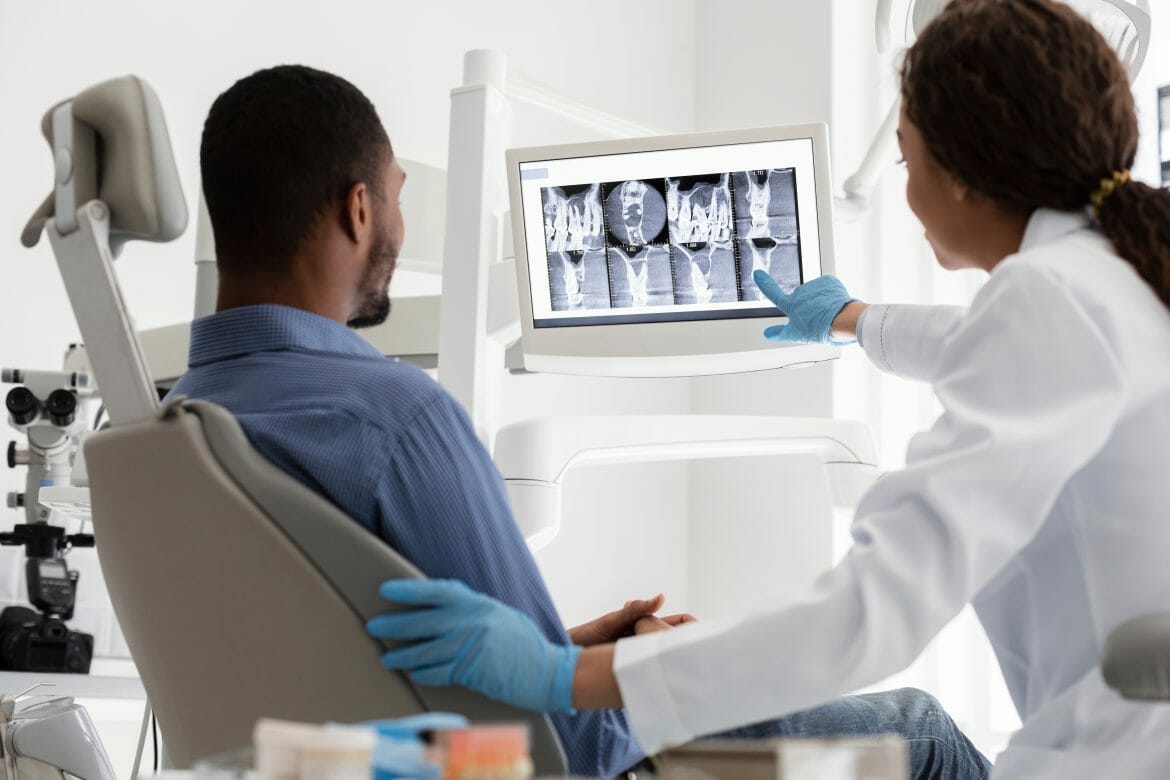Technologies in dentistry continue to evolve, and many of these will shape the future in beneficial ways, especially in improving the overall patient experience. Many are already making a profound impact on both patients and dentists alike, and future possibilities continue to build excitement and expectation.
Below are five of these exciting up-and-coming technologies, providing you with a glimpse of how they’ll shape the future of dentistry – and your dental experience – going forward.
1. Smart Toothbrushes
Smart technology is appearing everywhere these days, from cell phones to all-inclusive home systems. It’s no wonder, then, that this technology is now making its way into the dental realm with the creation of Smart Toothbrushes.
Within each toothbrush is a sensor, or set of sensors, monitoring your actions. This information is then fed to a companion app that can provide you with real-time feedback.
The app ensures you know whether or not you are brushing the most efficient way, if you are applying too much pressure, or missing certain spots. It may also offer fun activities and games for children, encouraging them to get in the good habit of caring for their teeth.
Who’s to say smart technology for the dental patient ends with toothbrushes, however. More than likely, devices to help you maintain optimal dental health at home in the future will also be introduced.
2. Laser Technology
Laser technology, while not entirely new, continues to make its way into dentistry and is an exciting patient care trend that will only continue to rise in the future.
One of the biggest apprehensions or fears of patients, and one that keeps many from seeking help before a dental issue becomes severe, is the use of needles and drills.
Also, filling cavities and treating gum disease traditionally requires painful and invasive treatments, and knowing this, many patients put off treatment as long as possible. As a result, tooth decay and gum inflammation can lead to tooth loss and other oral problems, which require even more treatments.
Today, laser technology can alleviate many of these patient concerns and lead to better overall dental health in less time.
Laser technology replaces the anxiety-inducing noises and vibrations of drills and eliminates the need for anesthesia for numbing the area. This, in turn, leads to fewer necessary appointments and less time required for recovery.
At Bateson Dentistry, the Solea® Laser is available to treat a variety of oral issues, including cavities, mouth ulcers, gum disease, and even oral surgery.
You can expect laser technologies in dentistry to continue to grow and will play a major role in patient treatment heading into the future.
3. Augmented Reality
Augmented reality is finding its way into various headlines lately and into various industries, including dentistry. What is it exactly? Augmented reality (AR) is the creation of an enhanced version of reality and is achieved by superimposing computer-generated images over the top of something already in existence.
In dentistry, this technology already helps with aesthetic procedures and reconstructive ones as well. It’s a way to show patients what their smiles and teeth will look like before any procedure occurs. Patients can even help design their own smile, making it an interactive experience.
The future is bright with possibilities for using Augmented Reality to help patients explore options and make better choices, and it will likely become a preferred way to develop a treatment plan.
4. Expansion of CAD (Computer-Assisted Design) and 3D Printing
The capabilities and uses of computer-assisted design (CAD) and 3D printing continue to expand in the healthcare field, including the printing of prosthetics, certain medicines, and even potentially replicating organs.
In dentistry, this technology duo is already showing success. Today dentists can create CEREC crowns in just one visit for patients. Here’s how the process works. Once a tooth is prepared for the crown, a computer captures images and relays them to a machine. This machine then manufactures the crown right there in your dentist’s office or nearby dental lab, and your dentist completes the procedure by inserting, cementing, and polishing the crown in your mouth.
With CAD and 3D printer technology, implants, retainers, aligners, orthodontic models, and many more dental devices can be customized and produced in less time than with traditional methods. Also, dental splints to help with bruxism, or the grinding of teeth at night, will be quicker and less costly to provide to patients.
Expect this technology to continue to grow in importance as it becomes more accessible to dental offices and labs. It may also grow as a solution to supply chain issues that can delay the arrival of materials and products.
5. AI (Artificial Intelligence) Diagnostic Tools
The use of AI (Artificial Intelligence) in dentistry is leading to diagnostic tools that can benefit patients by identifying conditions sooner and help create better treatment plans in less time.
For example, AI will assist with the earlier detection of oral cancers, identifying various oral lesions as benign, potentially malignant, and malignant. This can help aid in faster response and treatment for patients, leading to higher levels of care right when patients need it the most.
These five new technologies in dentistry will continue to grow and expand, providing exciting advancements and capabilities to benefit patients and assist dental teams in developing the best treatment plans possible and in less time.
Contact Bateson Dentistry for Solutions to All Your Dental Needs
Technologies continue to evolve and shape the future of dentistry, and Dr. Angela Bateson and her team strive to stay up-to-date to determine ways to better your patient experience while providing the dental services you need. Contact Bateson Dentistry today to learn more or to schedule an appointment.

